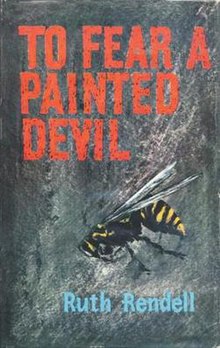
Hornets are the largest of the eusocial wasps, and are similar in appearance to yellowjackets, their close relatives. Some species can reach up to 5.5 cm (2.2 in) in length. They are distinguished from other vespine wasps by the relatively large top margin of the head. Worldwide, 22 species of Vespa are recognized. Most species only occur in the tropics of Asia, though the European hornet is widely distributed throughout Europe, Russia, North America, and north-eastern Asia. Wasps native to North America in the genus Dolichovespula are commonly referred to as hornets, but all of them are actually yellowjackets.

Ruth Barbara Rendell, Baroness Rendell of Babergh, was an English author of thrillers and psychological murder mysteries.
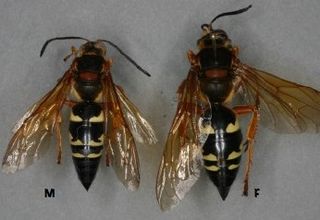
Sphecius speciosus, often simply referred to as the cicada killer or the cicada hawk, is a large, solitary digger wasp species in the family Crabronidae. The name may be applied to any species of crabronid that preys on cicadas, though in North America, it is typically applied to this species, also referred to as the eastern cicada killer in order to further differentiate it from the multiple other examples of related wasp species. Sometimes, they are called sand hornets, although they are not hornets, which belong to the family Vespidae. This species can be found in the Eastern and Midwest U.S. and southwards into Mexico and Central America. They are so named because they hunt cicadas and provision their nests with them. Cicada killers exert a measure of natural control on cicada populations, and as such, they may directly benefit the deciduous trees upon which the cicadas feed.

Daemonologie—in full Daemonologie, In Forme of a Dialogue, Divided into three Books: By the High and Mighty Prince, James &c.—was first published in 1597 by King James VI of Scotland as a philosophical dissertation on contemporary necromancy and the historical relationships between the various methods of divination used from ancient black magic. It was reprinted again in 1603 when James took the throne of England. The widespread consensus is that King James wrote Daemonologie in response to sceptical publications such as Reginald Scot's The Discoverie of Witchcraft.
The fear of wasps, technically known as spheksophobia, is a relatively common type of specific phobia. It is similar to fear of bees. Both are types of entomophobia, which is itself a category of zoophobia.
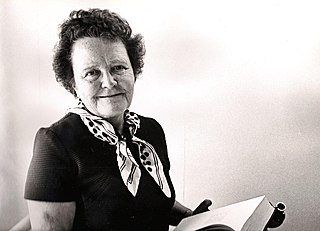
Ruth Myrtle Patrick was an American botanist and limnologist specializing in diatoms and freshwater ecology. She authored more than 200 scientific papers, developed ways to measure the health of freshwater ecosystems and established numerous research facilities.

The Schmidt sting pain index is a pain scale rating the relative pain caused by different hymenopteran stings. It is mainly the work of Justin O. Schmidt, who was an entomologist at the Carl Hayden Bee Research Center in Arizona. Schmidt published a number of works on the subject, and claimed to have been stung by the majority of stinging Hymenoptera.
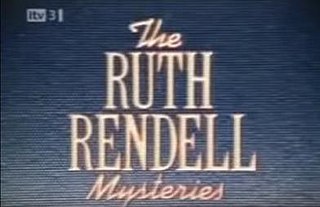
The Ruth Rendell Mysteries is a British television crime drama series, produced by TVS and later by its successor Meridian Broadcasting, in association with Blue Heaven Productions, for broadcast on the ITV network. Twelve series were broadcast on ITV between 2 August 1987 and 11 October 2000. Created by renowned author Ruth Rendell, the first six series focused entirely on her main literary character, Chief Inspector Reg Wexford, played by George Baker. Repeat airings of these series changed the programme's title to The Inspector Wexford Mysteries. However, later series shifted focus to other short stories previously written by Rendell, with Wexford featuring in only three further stories, in 1996, 1998 and 2000. When broadcast, these three stories were broadcast under the title Inspector Wexford.

A bee sting is the wound and pain caused by the stinger of a female bee puncturing skin. Bee stings differ from insect bites, with the venom of stinging insects having considerable chemical variation. The reaction of a person to a bee sting may vary according to the bee species. While bee stinger venom is slightly acidic and causes only mild pain in most people, allergic reactions may occur in people with allergies to venom components.
Chief Inspector Reginald "Reg" Wexford is a recurring character in a series of detective novels by English crime writer Ruth Rendell. He made his first appearance in the author's 1964 debut From Doon With Death, and has since been the protagonist of 23 more novels. In the TVS television series The Ruth Rendell Mysteries (1987-2000), he was played by George Baker.
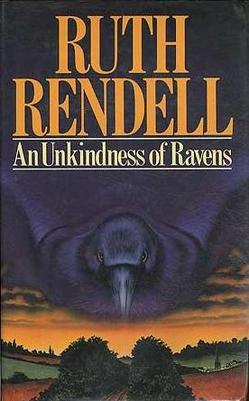
An Unkindness of Ravens is a murder mystery by British crime-writer Ruth Rendell. First published in 1985, it is the 13th in her series featuring Inspector Wexford.
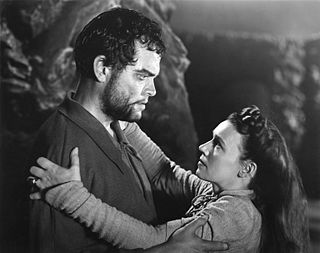
Lord Macbeth, the Thane of Glamis and quickly the Thane of Cawdor, is the title character and main protagonist in William Shakespeare's Macbeth. The character is loosely based on the historical king Macbeth of Scotland and is derived largely from the account in Holinshed's Chronicles (1577), a compilation of British history.

The fear of bees, also known as apiophobia, apiphobia, or melissophobia, is a specific phobia triggered by the presence of bees. It is a variation of entomophobia, a fear of insects. The phobia arises primarily from a fear of bee stings. Fear of bees often coincides with a fear of wasps, another stinging insect, and the two are sometimes conflated by people with bee phobias. A fear of bees can affect quality of life with anxiety around outdoor activities, and people with a bee phobia may experience symptoms of panic upon seeing a bee. Fear of bees may also occur in people who risk life-threatening reactions to stings, but this is considered a rational fear instead of a phobia.

She-Devil is a 1989 American black comedy film directed by Susan Seidelman and written by Barry Strugatz and Mark R. Burns. It stars Meryl Streep, Roseanne Barr and Ed Begley Jr. A loose adaptation of the 1983 novel The Life and Loves of a She-Devil by British writer Fay Weldon, She-Devil tells the story of Ruth Patchett, a dumpy, overweight housewife, who exacts devilish revenge after her philandering husband leaves her and their children for glamorous, best-selling romance novelist Mary Fisher.

Lewis Richardson is a fictional character from the British Channel 4 soap opera Hollyoaks, played by Ben Hull. Lewis was introduced by Phil Redmond as part of the Richardson family. Lewis made his first on-screen appearance on 30 October 1995 before departing on 15 October 2001. Lewis was initially a "good bloke" but changed, becoming like his abusive father Dennis Richardson. Lewis's exit from the serial was devised by series producer Jo Hallows who decided to kill Lewis on screen as part of a suicide storyline. The storyline was devised to show the "full horror" of suicide.

A wasp is any insect of the narrow-waisted suborder Apocrita of the order Hymenoptera which is neither a bee nor an ant; this excludes the broad-waisted sawflies (Symphyta), which look somewhat like wasps, but are in a separate suborder. The wasps do not constitute a clade, a complete natural group with a single ancestor, as bees and ants are deeply nested within the wasps, having evolved from wasp ancestors. Wasps that are members of the clade Aculeata can sting their prey.
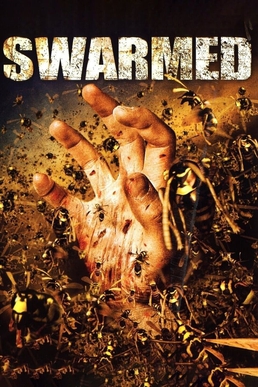
Swarmed is a 2005 Canadian film directed by Paul Ziller and starring Michael Shanks as a scientist trying to save a town from yellow jacket wasps. The film was made for television by Sci Fi Pictures. It first aired on April 6, 2005.

Telling the bees is a Western European tradition in which bees are told of important events, including deaths, births, marriages and departures and returns in the keeper's household. If the custom was omitted or forgotten and the bees were not "put into mourning" then it was believed a penalty would be paid, such as the bees leaving their hive, stopping the production of honey or dying.
